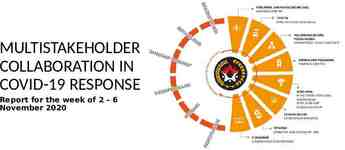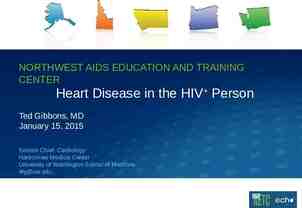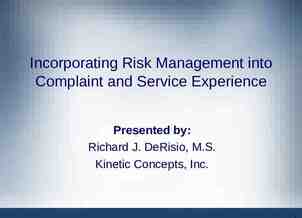A comparison of hybrid ensemble transform Kalman filter(ETKF)-3DVAR
18 Slides1,015.50 KB

A comparison of hybrid ensemble transform Kalman filter(ETKF)-3DVAR and ensemble square root filter (EnSRF) analysis schemes Xuguang Wang NOAA/ESRL/PSD, Boulder, CO Thomas M. Hamill Jeffrey S. Whitaker NOAA/ESRL/PSD, Boulder, CO Craig H. Bishop NRL, Monterey, CA

Motivation for the hybrid The hybrid ensemble (inexpensive yet skillful, e.g., ETKF)-3DVAR method is expected to be less expensive than ensemble data assimilation, and can also benefit from ensemble-estimated error statistics. The hybrid may be more robust for small ensemble size. The hybrid is convenient to be adapted to the existing variational framework. The risk of the hybrid is low as it can perform no worse than 3DVAR.

Hybrid ETKF-3DVAR updated perturbation 1 perturbation 1 member 1 forecast perturbation 2 ETKF update perturbations member 1 forecast member 2 analysis member 2 forecast member 3 analysis member 3 forecast updated perturbation 2 member 2 forecast updated perturbation 3 perturbation 3 member 3 forecast ensemble mean member 1 analysis ETKF-3DVAR update mean data assimilation updated mean forecast

Hybrid ETKF-3DVAR updates mean Background error covariance is approximated by a linear combination of the sample covariance matrix of the ETKF forecast ensemble and the static covariance matrix. T 1 T 1 a 1 x x b Pb x a x b H x a y R 1 H x a y 2 2 Pb 1 Pe B , 0 1 J Can be conveniently adapted into the operational 3DVAR through augmentation of control variables. T 1 T 1 T 1 J v1 v1 v 2 v 2 H x b x y R 1 H x b x y 2 2 2 x B 1/ 2 v1 1 P e 1/ 2 B static background error covariance P e ensemble covariance Pb hybrid covariance v2 weighting coefficient v1 standard 3DVAR control variables v 2 extended control variables

ETKF updates perturbations ETKF transforms forecast perturbations X binto analysis perturbations X a by X a X b T where Tis chosen by trying to solve the Kalman filter error covariance update equation, with forecast error covariance approximated by ensemble covariance. Latest formula for T (Wang et al. 2004;2005, MWR) T C Γ I 1/ 2 CT C and Γ contain eigenvectors and eigenvalues of the K K (ens. size) T matrix X b HT R 1HXb / K 1 ; is the estimated fraction of forecast error variance projected onto ensemble subspace Computationally inexpensive for ensemble size of o(100).

Experiment design Numerical model Dry 2-layer spectral PE model run at T31; Model state consists of vorticity, divergence and layer thickness of Exner function Error doubling time is 3.78 days at T31 Perfect model assumption (Hamill and Whitaker MWR, 2005) Observations 362 Interface and surface Exner functions taken at equally spaced locations Observation values are T31 truth plus random noise drawn from normal distribution Assimilated every 24h

Experiment design Hybrid solver and static error covariance model In this experiment, the hybrid updates the mean using 1 x a x b P bHT HPbHT R y Hx b P bHT 1 P eHT BHT HPbHT 1 HPeHT HBHT whose solution is equivalent to that if solved variationally under our experiment design. The static error covariance model is constructed iteratively from a large sample of 24h fcst. errors. First guess BHT and HBHT is constructed from 250 24h fcst. errors with covariance localization (iteratively) Run a huge number of DA cycles (7000 number of model dimension) with BHT and HBHT Construct BHT and HBHT with this huge sample of 24h forecast errors

RMS analysis errors: 50 member Covariance localization applied on the ETKF ensemble when updating the mean (but not applied when updating the perturbations) improves the analyses of the hybrid. Improved accuracy of EnSRF over 3DVAR can be mostly achieved by the hybrid.

RMS analysis errors: 20 member Both 20mem hybrid and EnSRF worse than 50mem; still better than 3DVAR Hybrid similarly accurate compared to EnSRF

RMS analysis errors: 10 member EnSRF filter divergence EnSRF experienced filter divergence for all localization scales tried. Hybrid is still more accurate than the 3DVAR. Hybrid is robust in the presence of small ensemble size.

Flow dependent background error covariance models (Hybrid 50 mem. result) (EnSRF 50 mem. result)

Spread-skill relationships Overall average of the spread is approximately equal to overall average of rms error for both EnSRF and Hybrid. Abilities to distinguish an analysis with large error variance from that with a small error variance are similar for EnSRF and Hybrid. (50 mem. result)

Summary A hybrid ETKF-3DVAR DA scheme was proposed and the skill was compared with EnSRF with a PE two layer model and simulated observations under perfect model assumption. The hybrid analyses can achieve similar improved accuracy of the EnSRF over 3DVAR. The hybrid is more robust when ensemble size is small. The ETKF ensemble variance is as skillful as the EnSRF. The hybrid can be conveniently adapted into the existing operational 3DVAR framework. The hybrid is expected to be less expensive than the EnSRF.

Future work Preliminary results of OSSE within imperfect model environment, e.g., model with resolution error, also suggest hybrid can be as accurate as EnSRF. Incorporate to WRF 3DVAR and GFS GSI frameworks. Extend the idea of the hybrid ETKF-3DVAR to the 4DVAR framework.

Preliminary results with resolution model error T127 run as truth; imperfect model run at T31 Additive noise for EnSRF drawn randomly from the truncation error samples Additive noise for hybrid drawn randomly from B 15000km localization tried on ETKF ensemble when updating the mean of the hybrid comparable rms errors for hybrid and EnSRF

Statistics of iteratively constructed B imbalance rms analysis errors

Single observation analysis increment for 3DVAR

Initial-condition balance Analysis is more imbalanced with more severe localization. Hybrid analysis is more balanced than EnSRF. (50 mem. result)






